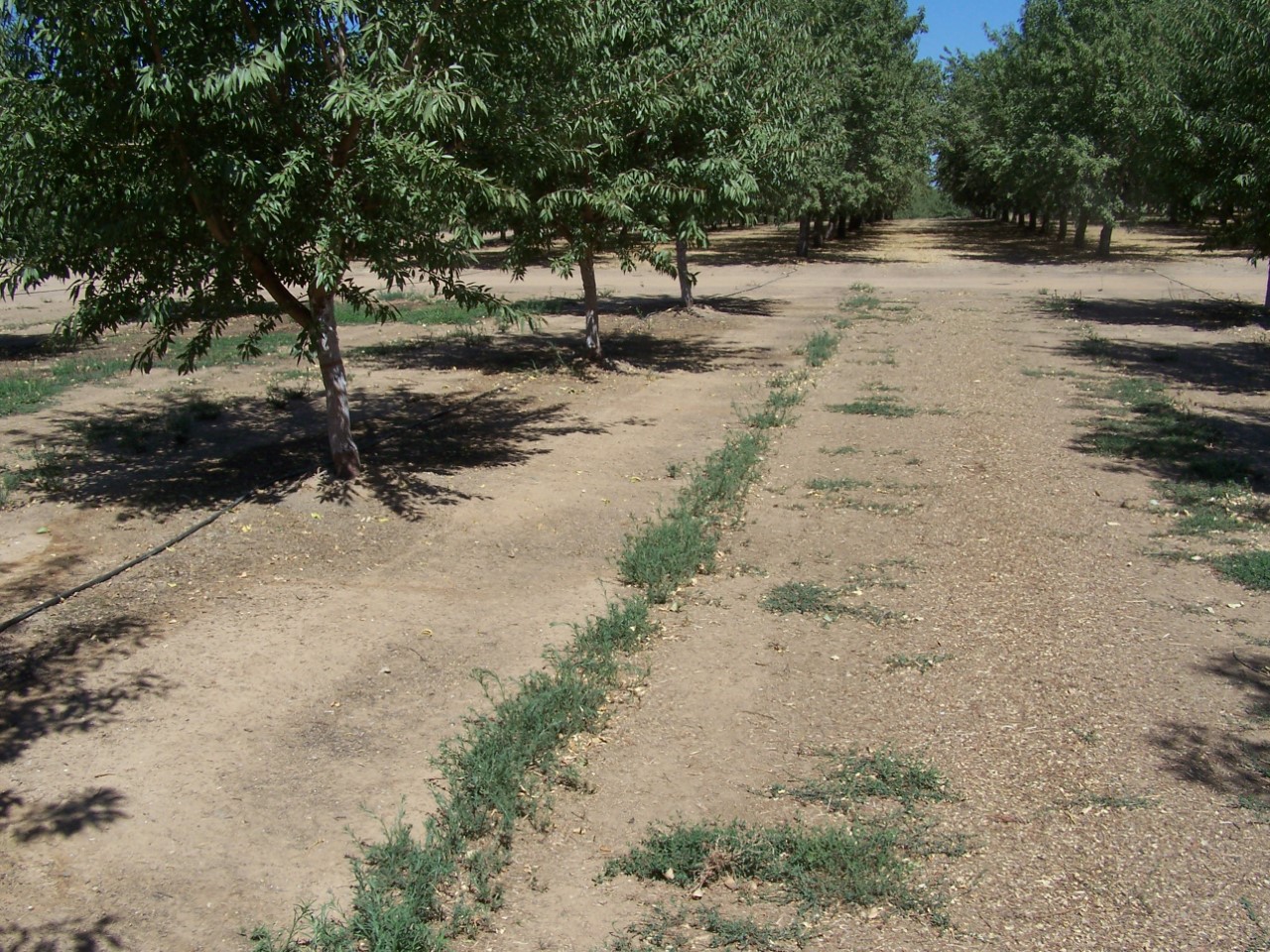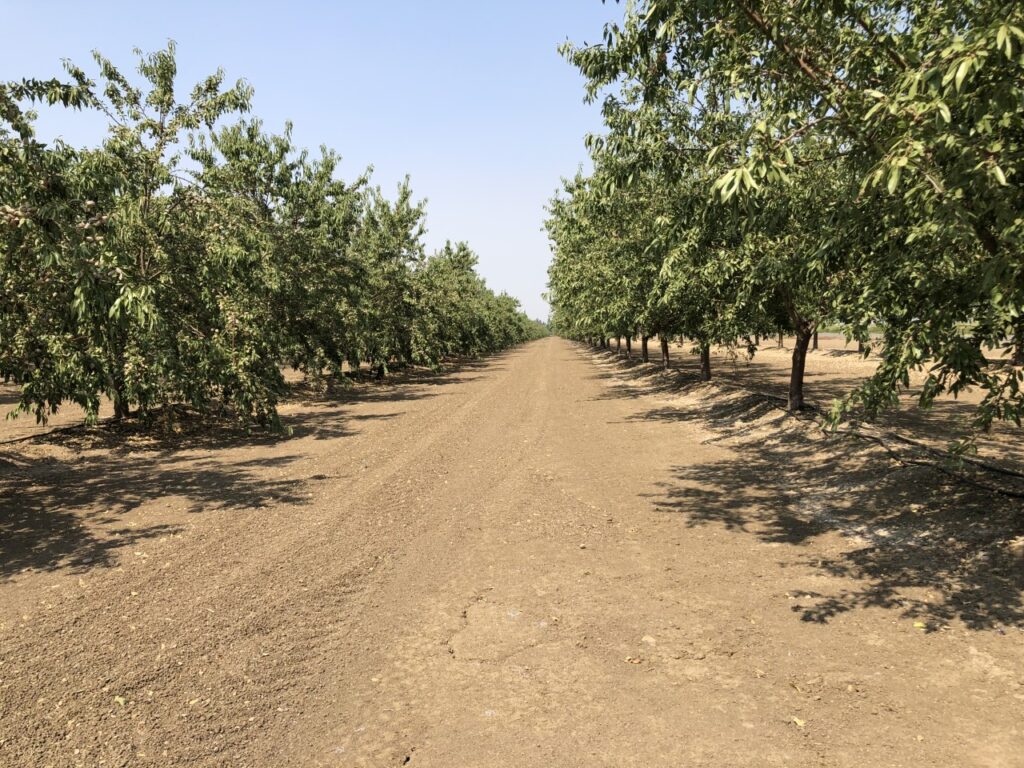
As harvest comes to a close and tree nut growers and PCAs start looking to next year, fall weed control and planning ahead for winter weed management should be priorities, according to Brad Hanson, UCCE weed specialist at UC Davis.
While fall isn’t the most critical period for controlling weeds from an orchard crop standpoint, it can be a vital time to get a head start on winter weed control programs.
“I kind of half-jokingly have said that what you are doing in the fall is buying enough time after harvest is done to enjoy Thanksgiving and go deer hunting if that is your thing,” Hanson said. “But it is probably too early to do your heavy-lifting weed control at that point.
“A lot of what we are doing in the fall is getting ready for winter, so we control the holdover weeds from last year and knock back the early emerging weeds,” he said. “You don’t want a lot of big weeds out there, alive or dead, going into winter, and, importantly, we are trying to control those weeds from last season before they set seed.
Getting a Head Start
“When we get to December and January, that is when the more heavy-duty herbicide programs go out in most orchards, because they have a chance to get incorporated with the rainfall,” he said.
That said, Hanson noted that fall provides an excellent opportunity for controlling certain weeds, such as an herbaceous perennial like field bindweed. “If you’ve got significant issues with field bindweed, there is a good chance in the fall to take an extra shot at it because in the fall, many perennial weeds are remobilizing their nutrients down into the root system. So, we have an opportunity with some of our translocated herbicides to get a little better control with a fall application shortly before the weeds go dormant for the winter.”
Alkali weed, a deeply rooted perennial in the same family as field bindweed that is tolerant to glyphosate and can be problematic in pistachios, also may be particularly susceptible to herbicides in the fall. Like field bindweed, alkali weed relocates reserves from aboveground material into root systems as it starts to go dormant.
“So, you have a lot of downward movement of resources and you can get better herbicide movement downward into that root system also,” Hanson said.
“My suspicion is fall is probably a good opportunity to try to control that perennial weed, but I don’t have a lot of data on that just yet,” he added. “We did our first experiment this year with farm advisors in the San Joaquin Valley, but those were spring applications. My intention is to go back to those orchards and repeat those treatments in the fall.”
In many cases, a broad-spectrum contact herbicide, such as glufosinate or paraquat, provides a good option for control of most early emerging broadleaf and grass weeds in the fall, Hanson said. “In that fall time frame, grasses, such as ryegrass and bluegrass, are going to be quite small, and you can often get pretty good control with those broad-spectrum contact herbicides,” he said.
After getting to six inches or so, contact herbicides often are less efficacious on the grasses. In some cases, such as during wetter falls or in early harvested orchards, growers may want to include an herbicide that has a short residual activity to help prolong weed control until the winter application timing, he said.

Preparing for Winter
In addition to weed control operations, Hanson said that fall is a good time for growers to think about replacing spray nozzles and calibrate equipment. “It is worth spending a few dollars on new nozzles every once-in-a-while to make sure you are putting those tens or even hundreds of thousands of dollars of active ingredient on the ground the way you think you are,” he said.
He added that it is important for growers to rotate chemistries and tank mix when appropriate to avoid the buildup of resistance.
Another significant step for growers and PCAs in the fall, Hanson said, is to think about the previous year’s weed control program and strategize ahead while scouting orchards. He advised growers to think about what went right and what went wrong last year and think about what could be tweaked to improve the program. That may involve changing an herbicide program, adding a tank mix partner, changing up the timing or even going to a split application.
Hanson added that the answer isn’t always more or better herbicides.
“I think it is really important to be smart about understanding the weed problem you are trying to resolve,” he said. “That includes properly identifying the weed and having some idea of its biology, such as when does it come up versus when are my interventions, whether that be herbicide or physical, and not trying to just use a bigger hammer. I don’t want to use a hammer if that is not the right tool. Using the right tool is really important.
“So, be thinking about, ‘how can I use these tools in my toolbox to their best advantage,’ rather than just using more of them or a larger one. You need to be smart about what the problem is you are trying to solve and understand how the tools you have at your disposal work,” Hanson said.
Stay on Top of Weeds
Controlling weeds is a vital part of any orchard management system, Hanson said. In young orchards, weeds can compete with newly planted trees for water and nutrients. Weeds also create habitat for gophers and other pests that can be particularly problematic for young orchards.
Once an orchard is established, there is less direct competition with the trees for water and nutrients, Hanson said, but weeds are still problematic. “By year four or five, the trees have big enough canopies, deep enough roots, they aren’t as directly impacted by weeds from a competition standpoint,” he said. “However, in a lot of crops, we are managing weeds because of indirect effects. That could be things like cover for vertebrate pests like gophers and squirrels, and probably more importantly, weeds decrease the efficiency of a cropping system. If you have weeds in the orchard, those weeds are using fertilizer and water. Anything that the weeds use, the crop is not able to use.”
Weeds also can interfere with operations by blocking sprinkler patterns and creating issues with water distribution. And weeds can interrupt harvest by interfering with floor operations like sweeping and blowing and picking up nuts.
In general, tree nut growers have a good arsenal of products available for weed control, Hanson said, and with good management, including some timely fall applications, should be able to stay on top of weeds.
“I think we have quite a few tools out there,” he said. “The challenges are mostly related to cost. Whether it is because of resistance to glyphosate or market pressures to use less glyphosate, pretty much everything costs more. But I think we can put together good programs. They are just going to be more expensive. But that is where growers and PCAs with field scouting, problem identification, good weed control program development and good applications really see a difference.”















